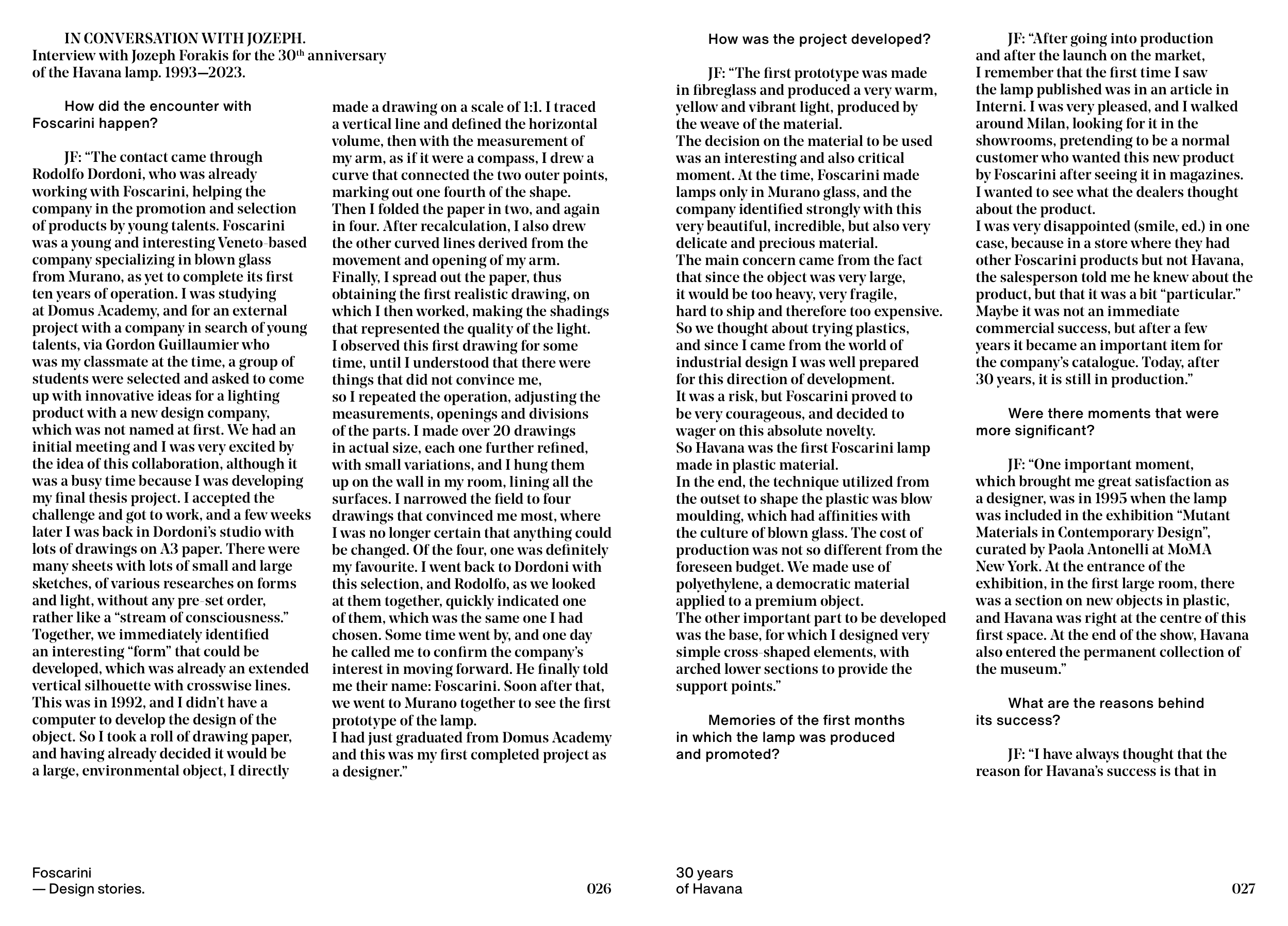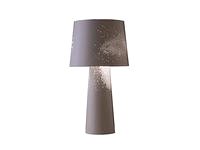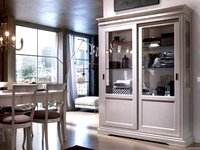026
027
30 years
of Havana
Foscarini
— Design stories.
IN CONVERSATION WITH JOZEPH.
Interview with Jozeph Forakis for the 30th anniversary
of the Havana lamp. 1993—2023.
How did the encounter with
Foscarini happen?
JF: “The contact came through
Rodolfo Dordoni, who was already
working with Foscarini, helping the
company in the promotion and selection
of products by young talents. Foscarini
was a young and interesting Veneto-based
company specializing in blown glass
from Murano, as yet to complete its first
ten years of operation. I was studying
at Domus Academy, and for an external
project with a company in search of young
talents, via Gordon Guillaumier who
was my classmate at the time, a group of
students were selected and asked to come
up with innovative ideas for a lighting
product with a new design company,
which was not named at first. We had an
initial meeting and I was very excited by
the idea of this collaboration, although it
was a busy time because I was developing
my final thesis project. I accepted the
challenge and got to work, and a few weeks
later I was back in Dordoni’s studio with
lots of drawings on A3 paper. There were
many sheets with lots of small and large
sketches, of various researches on forms
and light, without any pre-set order,
rather like a “stream of consciousness.”
Together, we immediately identified
an interesting “form” that could be
developed, which was already an extended
vertical silhouette with crosswise lines.
This was in 1992, and I didn’t have a
computer to develop the design of the
object. So I took a roll of drawing paper,
and having already decided it would be
a large, environmental object, I directly
made a drawing on a scale of 1:1. I traced
a vertical line and defined the horizontal
volume, then with the measurement of
my arm, as if it were a compass, I drew a
curve that connected the two outer points,
marking out one fourth of the shape.
Then I folded the paper in two, and again
in four. After recalculation, I also drew
the other curved lines derived from the
movement and opening of my arm.
Finally, I spread out the paper, thus
obtaining the first realistic drawing, on
which I then worked, making the shadings
that represented the quality of the light.
I observed this first drawing for some
time, until I understood that there were
things that did not convince me,
so I repeated the operation, adjusting the
measurements, openings and divisions
of the parts. I made over 20 drawings
in actual size, each one further refined,
with small variations, and I hung them
up on the wall in my room, lining all the
surfaces. I narrowed the field to four
drawings that convinced me most, where
I was no longer certain that anything could
be changed. Of the four, one was definitely
my favourite. I went back to Dordoni with
this selection, and Rodolfo, as we looked
at them together, quickly indicated one
of them, which was the same one I had
chosen. Some time went by, and one day
he called me to confirm the company’s
interest in moving forward. He finally told
me their name: Foscarini. Soon after that,
we went to Murano together to see the first
prototype of the lamp.
I had just graduated from Domus Academy
and this was my first completed project as
a designer.”
How was the project developed?
JF: “The first prototype was made
in fibreglass and produced a very warm,
yellow and vibrant light, produced by
the weave of the material.
The decision on the material to be used
was an interesting and also critical
moment. At the time, Foscarini made
lamps only in Murano glass, and the
company identified strongly with this
very beautiful, incredible, but also very
delicate and precious material.
The main concern came from the fact
that since the object was very large,
it would be too heavy, very fragile,
hard to ship and therefore too expensive.
So we thought about trying plastics,
and since I came from the world of
industrial design I was well prepared
for this direction of development.
It was a risk, but Foscarini proved to
be very courageous, and decided to
wager on this absolute novelty.
So Havana was the first Foscarini lamp
made in plastic material.
In the end, the technique utilized from
the outset to shape the plastic was blow
moulding, which had affinities with
the culture of blown glass. The cost of
production was not so different from the
foreseen budget. We made use of
polyethylene, a democratic material
applied to a premium object.
The other important part to be developed
was the base, for which I designed very
simple cross-shaped elements, with
arched lower sections to provide the
support points.”
Memories of the first months
in which the lamp was produced
and promoted?
JF: “After going into production
and after the launch on the market,
I remember that the first time I saw
the lamp published was in an article in
Interni. I was very pleased, and I walked
around Milan, looking for it in the
showrooms, pretending to be a normal
customer who wanted this new product
by Foscarini after seeing it in magazines.
I wanted to see what the dealers thought
about the product.
I was very disappointed (smile, ed.) in one
case, because in a store where they had
other Foscarini products but not Havana,
the salesperson told me he knew about the
product, but that it was a bit “particular.”
Maybe it was not an immediate
commercial success, but after a few
years it became an important item for
the company’s catalogue. Today, after
30 years, it is still in production.”
Were there moments that were
more significant?
JF: “One important moment,
which brought me great satisfaction as
a designer, was in 1995 when the lamp
was included in the exhibition “Mutant
Materials in Contemporary Design”,
curated by Paola Antonelli at MoMA
New York. At the entrance of the
exhibition, in the first large room, there
was a section on new objects in plastic,
and Havana was right at the centre of this
first space. At the end of the show, Havana
also entered the permanent collection of
the museum.”
What are the reasons behind
its success?
JF: “I have always thought that the
reason for Havana’s success is that in




